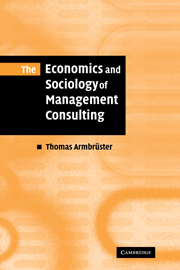Book contents
References
Published online by Cambridge University Press: 22 September 2009
- Type
- Chapter
- Information
- The Economics and Sociology of Management Consulting , pp. 223 - 246Publisher: Cambridge University PressPrint publication year: 2006



